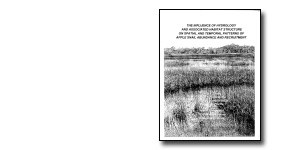|
Baseline Research >> Current Page

National Park Service Photo by Rodney Cammauf The Florida apple snail, Pomacea paludosa, is a common resident of the freshwater Everglades, and forms an important link in the food web of the marsh. In particular, P. paludosa is nearly the exclusive prey of the federally endangered Everglades Snail Kite. Prior to this investigation, little was known regarding the abundance and distribution of this snail relative to hydrology and habitat structure. Among other findings, the project demonstrates that this snail prefers wetlands that support emergent vegetation over areas dominated by fragrant waterlily, Nymphaea odorata. This finding is further corroborated through observations made of foraging Snail Kites. FINAL REPORT 
Full Report RELATED PUBLICATIONS Bennetts, R. E., Darby, P. C., Karunaratne, L. B. (2006). Foraging patch selection by snail kites in response to vegetation structure and prey abundance and availability. Waterbirds, 29(1): 88-94 Darby, P. C., Bennetts, R. E. & Karunartne, L. B. (2006). Apple snail densities in habitats used By foraging Snail Kites. Florida Field Naturalist, 34(2): 37-47. Karunaratne, L. B., Darby, P.C. & Bennetts, R. E. (2006). The effects of wetlands habitat structure on Florida apple snail density. Wetlands, 26(4): 1143-1150.
|
Last updated: October 3, 2018

